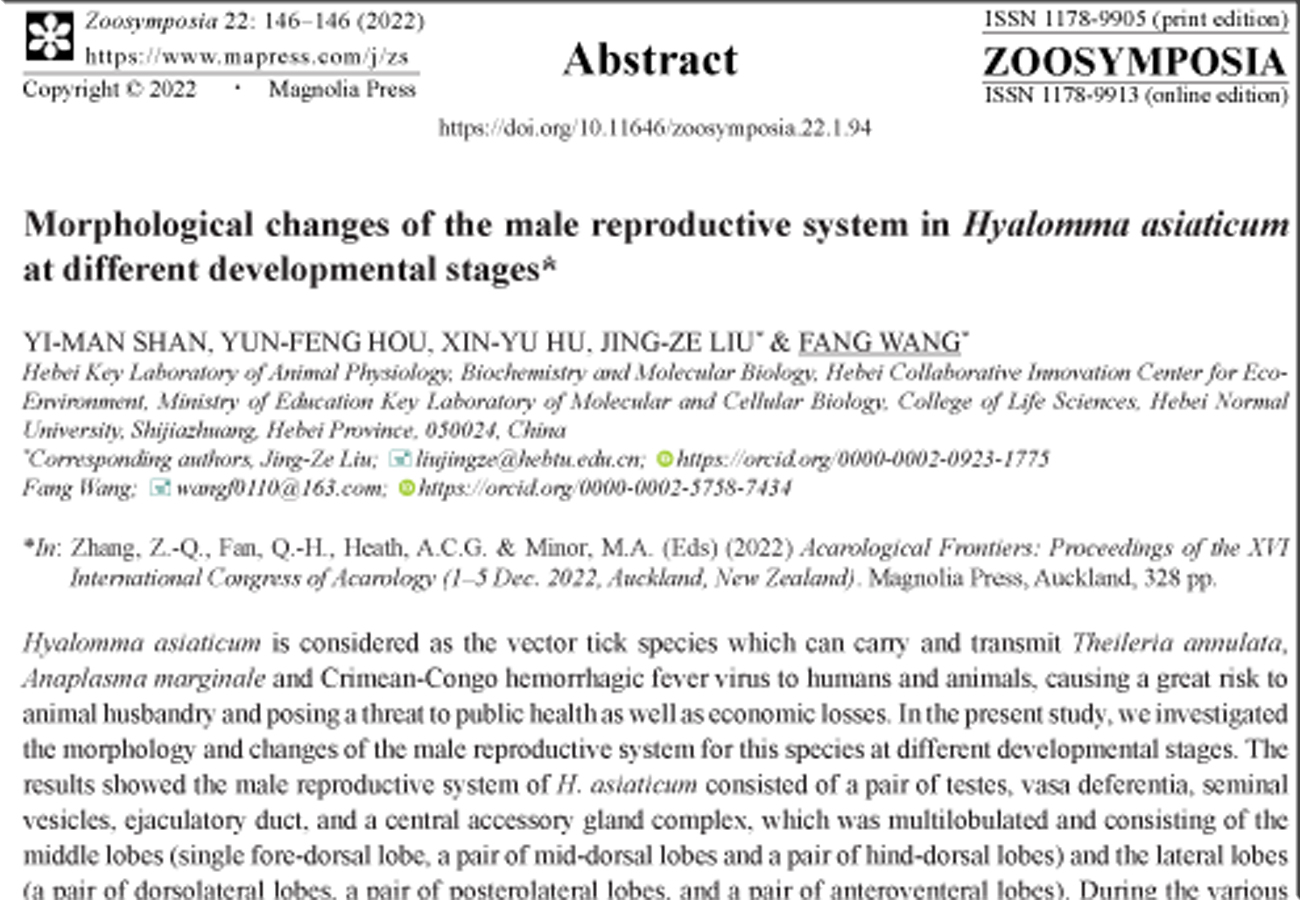Abstract
Hyalomma asiaticum is considered as the vector tick species which can carry and transmit Theileria annulata, Anaplasma marginale and Crimean-Congo hemorrhagic fever virus to humans and animals, causing a great risk to animal husbandry and posing a threat to public health as well as economic losses. In the present study, we investigated the morphology and changes of the male reproductive system for this species at different developmental stages.
References
Kamani, J., Baneth, G., Apanaskevich, D.A., Mumcuoglu, K.Y. & Harrus, S. (2015) Molecular detection of Rickettsia aeschlimannii in Hyalomma spp. ticks from camels (Camelus dromedarius) in Nigeria, west Africa. Medical and Veterinary Entomology, 29(2), 205–209. https://doi.org/10.1111/mve.12094
Choubdar, N., Karimian, F., Koosha, M., Nejati, J. & Oshaghi, M.A. (2021) Hyalomma spp. ticks and associated Anaplasma spp. and Ehrlichia spp. on the Iran-Pakistan border. Parasites & Vectors, 14(1), 469. https://doi.org/10.1186/s13071-021- 04956-3


